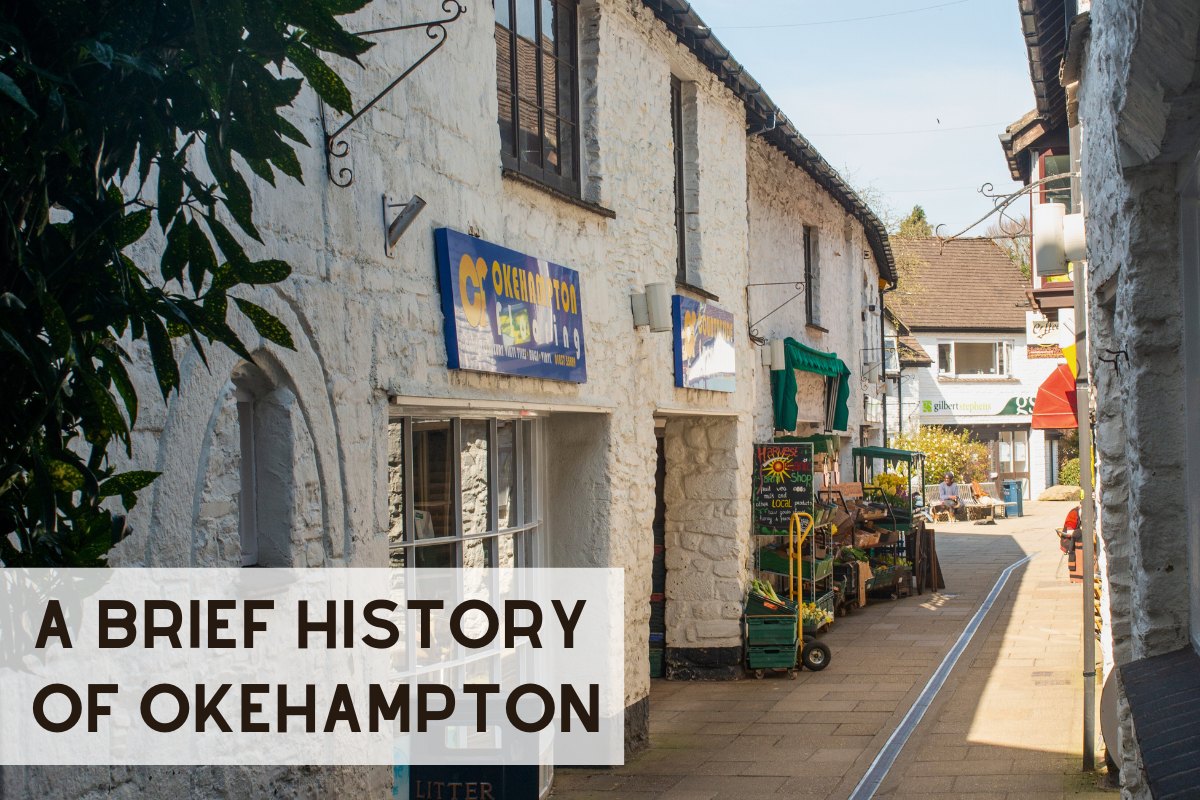 Nestled on the edge of Dartmoor, Okehampton is a historic market town in West Devon, rich with heritage and charm. The town's name is derived from "Oke,", referring to the oak trees that once populated the area, and "hampton," meaning a settlement or homestead. Okehampton was recorded in the Domesday Book in 1086 as "Ochementone," indicating its long-standing presence in the region. As a gateway to Dartmoor, Okehampton is an excellent base for exploring the natural beauty of the moor's tors, reservoirs, and landmarks, all while delving into the town's intriguing past.
Nestled on the edge of Dartmoor, Okehampton is a historic market town in West Devon, rich with heritage and charm. The town's name is derived from "Oke,", referring to the oak trees that once populated the area, and "hampton," meaning a settlement or homestead. Okehampton was recorded in the Domesday Book in 1086 as "Ochementone," indicating its long-standing presence in the region. As a gateway to Dartmoor, Okehampton is an excellent base for exploring the natural beauty of the moor's tors, reservoirs, and landmarks, all while delving into the town's intriguing past.
The history of Okehampton likely began in the Saxon era, with archaeological evidence suggesting earlier prehistoric settlements in the vicinity. The town's medieval roots are symbolised by the ruins of Okehampton Castle, a Norman fortress built soon after the Conquest. The castle's strategic location on a high spur overlooking the West Okement River made it an important defensive site throughout the Middle Ages. By the time of the Domesday Book, Okehampton had a modest population with significant agricultural land, including space for ploughs, meadows, and extensive pastures.
Okehampton's prosperity grew partly due to the tin mining industry, like other towns in Devon. The town also developed a thriving wool industry, with the River Okement powering mills that processed wool from the surrounding areas. Okehampton’s market, established in the 12th century, became a vital economic hub, drawing traders and buyers from across Devon. The market tradition continues to this day, reflecting the town's enduring role in regional commerce.
St. James Chapel, located near the town center, is one of Okehampton's historic landmarks. Originally built in the 13th century, it served the community for centuries before being converted into the Museum of Dartmoor Life, where visitors can explore Okehampton’s rich heritage. Another significant site is the Church of All Saints, which dates back to the 15th century and features stunning stained glass windows and intricate stone carvings.
Okehampton's White Hart Hotel stands as a testament to the town's long history. Dating back to the 17th century, it has welcomed numerous notable guests over the years. The hotel's well-preserved architecture and period features offer a glimpse into the town's past while providing modern comforts for visitors.
During World War II, Okehampton played a critical role as a military training base. Its expansive moorland provided ideal conditions for exercises, and the town's facilities were utilised by the armed forces, contributing to the war effort.
Today, Okehampton is a vibrant community that beautifully balances its historical roots with modern life. Visitors can explore the ruins of the ancient castle and, stroll through charming streets lined with independent shops. Local events, such as the annual Okehampton Show, celebrate the town’s agricultural heritage and community spirit.
With its proximity to Dartmoor National Park, Okehampton remains a favourite destination for outdoor enthusiasts, offering opportunities for hiking, cycling and exploring the breathtaking moorland and ancient woodlands.
To truly experience Okehampton’s history, a visit to the town is essential. Explore the remnants of Okehampton Castle, wander through the charming streets, and immerse yourself in the vibrant community events that bring the town’s history to life.
For more information on planning your visit, follow us on Facebook, Instagram, and Twitter, and stay tuned for the latest updates and insights into South Devon's rich heritage.
Related
Comments
Comments are disabled for this post.



 to add an item to your Itinerary basket.
to add an item to your Itinerary basket.









